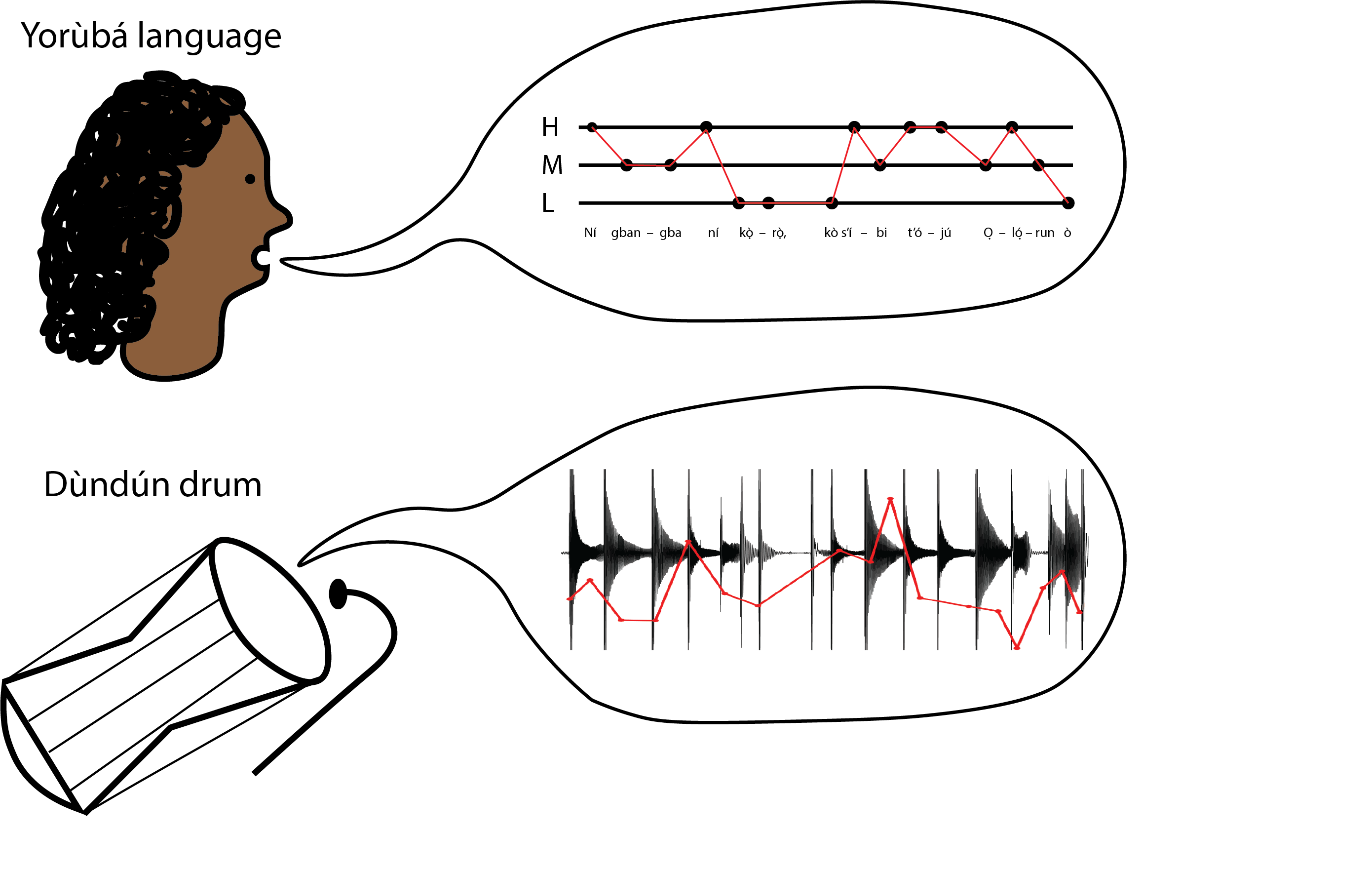Drums help us understand how we process speech and music
Online audio examples for Frontiers for Young Minds article
[NOTE. Audio files have been disabled to prevent unintended misuse of the stimulus material. Should you wish to listen to the audio files, please be in contact.]
by Lauren Fink, Cecilia Durojaye, Tina Roeske, Melanie Wald-Fuhrmann, & Pauline Larrouy-Maestri
Yorùbá language and dùndún drumming:
In Nigeria, many people speak a language called Yorùbá. Unlike English, to speak Yorùbá, certain parts of words need to be spoken at particular pitches to be properly understood. This is the principle of a tone language; Yorùbá is not the only one, Mandarin Chinese is another example. In the Yorùbá language, there are three distinct tone levels (low, medium, high). The dùndún is capable of imitating those tone levels and plays the role of speech surrogate. For example, in Yorùbá you could say:
and on the drum you would play:
Can you hear the similarity between the two examples? Even though one is the human voice and the other is a drum, the tones and timing of the two examples should sound similar to you. If you are having trouble hearing the changes over time, try following along with the red lines in figure above while you listen. The three lines in the top speech bubble represent the tone levels of Yorùbá: High, Medium, Low. The waveform in the lower speech bubble shows the changes in drum intensity over time. Each black burst indicates a strike of the drum. You can “read” the rhythm from left to right. In both speech bubbles, the red line corresponds to the changes in tone. Both sound clips follow the same general changes in tone over time.
Can you tell whether the dùndún is “talking” or playing music?
Understanding exactly what the dùndún talking drum is saying (the content of its message) would require being familiar with the Yorùbá language. However, we were interested in whether people would be able to tell, in general, whether the drum was speaking or playing music. Do you think you could tell the difference between drum speech and music? Try it! Below we provide three examples of dùndún performances. Can you guess whether each one is music vs. speech? An answer key is provided at the bottom of the page.
We asked over 100 people to do the task you just did. We were interested in whether those unfamiliar with the dùndún and Yorùbá language could tell above chance whether they were hearing speech or music. We also wanted to know whether there are specific characteristics of sound that define the speech and music categories. You can read our original research article here or our version for Young Minds here [paper coming soon].
Answer Key (s = speech; m = music): m, s, s, m.
